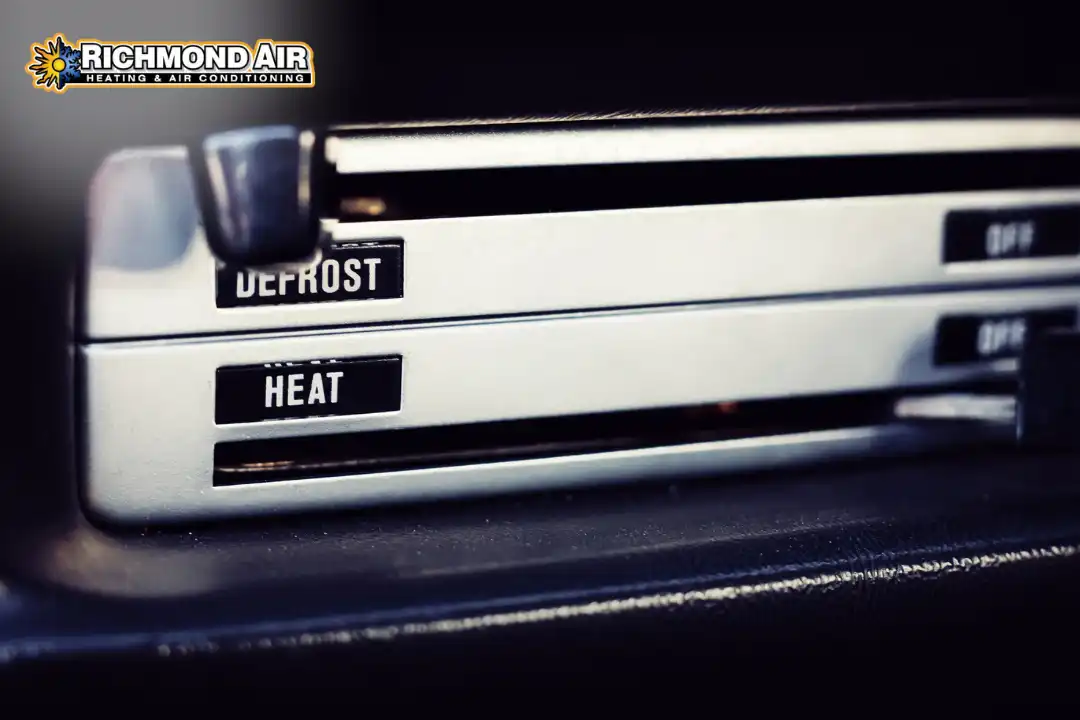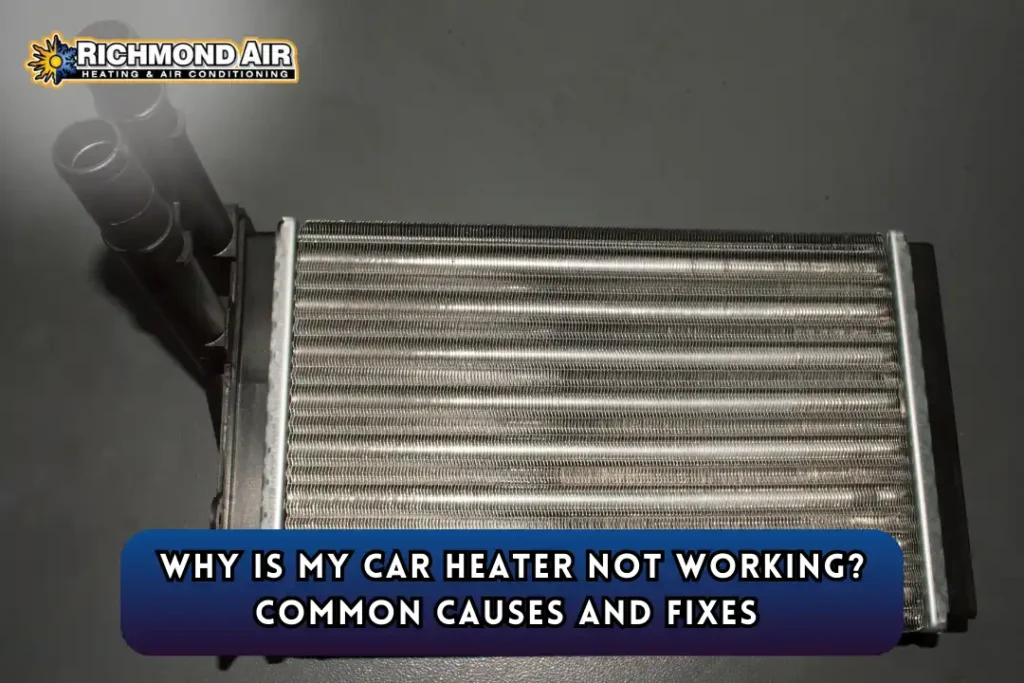Ah, the joys of winter driving: frosty mornings, icy roads, and the sweet, sweet warmth of your car heater. Except, wait, your heater isn’t working? Suddenly, your car feels less like a cozy escape and more like a mobile freezer. If you’re asking yourself, “Why is my car heater not working?” you’re not alone. This is a common issue, and luckily, it’s often fixable without needing to sell your soul (or your car). Let’s get into the possible reasons your heater is on strike and how to get it back to work.
How Does a Car Heater Work?
Before we start pointing fingers at your car’s components, let’s understand how the heater works. According to a source, your car’s heating system is essentially a heat exchange process. It uses the engine’s coolant, which absorbs heat as it circulates through the engine. This hot coolant flows through the heater core (a mini radiator), and a blower motor pushes a ir over the heater core, sending warm air into your cabin.
If any part of this process goes haywire, if it’s the coolant, heater core, thermostat or blower motor, you’ll be left shivering in your seat.
Why Is My Car Heater Not Working?
Troubleshooting Steps
If you’re feeling brave and want to troubleshoot the issue yourself, there are a few steps you can take to identify why your car heater isn’t working. While some fixes are simple, others may require professional help. Here’s a detailed guide to help you get started:
1. Check Coolant Levels
Coolant is the lifeblood of your car’s heating system, and low levels can prevent the heater from working properly. When the coolant is too low, there isn’t enough hot fluid circulating through the heater core to produce warm air.
How to Check:
First, make sure the engine is completely cool before opening the coolant reservoir or radiator cap. Opening it while the engine is hot can cause pressurized coolant to spray out, which is dangerous.
Locate the coolant reservoir under the hood (it’s usually a translucent plastic tank with “min” and “max” lines). If the coolant level is below the minimum line, it needs to be topped off.
Use the correct coolant mixture (typically a 50/50 mix of antifreeze and water) to refill the reservoir.
If you find yourself frequently topping off the coolant, there may be a leak in the system. Look for puddles of coolant under your car or signs of dried coolant (a crusty, white or green residue) around hoses and connections.
2. Inspect the Thermostat
The thermostat is a small but critical component that regulates the flow of coolant through the engine and heater core. If it’s stuck open, the engine won’t reach the proper operating temperature, and the heater won’t produce warm air. If it’s stuck closed, the engine may overheat, which is a much bigger problem.
How to Check:
Start your car and let it idle for a few minutes. Keep an eye on the temperature gauge on your dashboard.
If the gauge stays on “cold” even after 10-15 minutes of driving, the thermostat might be stuck open, preventing the engine from warming up.
On the other hand, if the gauge quickly climbs to “hot” or the engine overheats, the thermostat could be stuck closed.
Replacing a thermostat is a relatively inexpensive fix, but it’s best to have a mechanic handle it unless you’re comfortable working on your car’s cooling system.
3. Feel the Heater Hoses
The heater hoses are the pipes that carry hot coolant to and from the heater core. If one hose is hot and the other is cold, it’s a sign that the heater core is clogged or blocked, preventing the coolant from flowing through.
How to Check:
With the engine running and warmed up, pop the hood and locate the two hoses leading to the heater core (usually near the firewall at the back of the engine bay).
Carefully touch the hoses (use gloves if necessary, as they can get very hot). Both hoses should feel warm or hot to the touch.
If one hose is significantly cooler than the other, the heater core may be clogged with debris or corrosion.
A clogged heater core can sometimes be flushed to remove the blockage, but in severe cases, it may need to be replaced. This is a labor-intensive job, as the heater core is often buried behind the dashboard.
4. Test the Blower Motor
The blower motor is responsible for pushing air through the vents and into your car’s cabin. If the blower motor isn’t working, you won’t feel any air coming out of the vents, even if the heater core is producing warm air.
How to Check:
Turn on your car’s fan and listen for noise. If the fan is silent or only works on certain speeds, the blower motor or its resistor may be faulty. Try adjusting the fan speed. If it only works on the highest setting, the blower motor resistor is likely the culprit. Check the fuse box for a blown fuse related to the blower motor. Replacing a fuse is a quick and inexpensive fix.
If the blower motor itself is faulty, it will need to be replaced. This can be a DIY job if you’re comfortable with basic car repairs, but it’s often easier to have a mechanic handle it.
5. Check for Leaks
A leaking heater core is a common cause of heater problems. If the heater core is leaking, you may notice a sweet, syrupy smell inside the car (a telltale sign of antifreeze). You might also find puddles of coolant on the passenger-side floor or see steam coming from the vents.
How to Check:
Inspect the area under your dashboard, especially on the passenger side, for dampness or puddles.
Look for signs of coolant dripping under the car or around the heater core hoses in the engine bay.
If you notice a sweet smell or foggy windows that won’t clear, it’s likely a heater core issue.
Unfortunately, a leaking heater core usually requires replacement, which can be expensive due to the labor involved. However, ignoring the problem can lead to more serious issues, such as engine overheating or coolant loss.
By following these troubleshooting steps, you can often identify the root cause of your car heater problem. While some fixes are simple (like topping off coolant or replacing a fuse), others may require professional help. Either way, addressing the issue promptly will ensure you’re not left shivering on your next drive.
Common Reasons Your Car Heater Isn’t Working

1. Low Coolant Levels
Coolant isn’t just for keeping your engine cool; it’s also the lifeblood of your heating system. If your coolant levels are low, there won’t be enough hot fluid to circulate through the heater core, leaving you with cold air.
What to Do:
- Check your coolant reservoir (usually a translucent tank under the hood). If it’s below the minimum line, top it off with the correct coolant mixture (typically a 50/50 mix of antifreeze and water).
- If the coolant keeps disappearing, you might have a leak. Look for puddles under your car or consult a mechanic.
2. Faulty Thermostat
The thermostat is like the gatekeeper of your car’s cooling system. It regulates the flow of coolant to the engine and heater core. If it’s stuck open, the engine won’t get hot enough to produce warm air. If it’s stuck closed, your engine might overheat (and still no heat for you).
What to Do:
- If your temperature gauge stays on “cold” even after driving for a while, the thermostat might be stuck open.
- Replacing a thermostat is relatively inexpensive (usually $20-$80 for the part), but labor costs can vary.
3. Clogged or Leaking Heater Core
The heater core is the MVP of your heating system, but it’s also a common troublemaker. Over time, it can get clogged with debris or corroded, preventing hot coolant from flowing through. A leaking heater core can also cause a sweet, syrupy smell in your car or leave puddles on the passenger-side floor.
What to Do:
- If you suspect a clog, a mechanic can flush the heater core to clear it out. ● For leaks, replacement is often the only option, and it can be pricey due to the labor involved (up to $1,000 or more).
4. Blower Motor Issues
If the blower motor isn’t working, you won’t feel any air coming out of the vents, even if the heater core is doing its job. Sometimes, the issue is with the blower motor resistor, which controls the fan speed.
What to Do:
- Turn on the fan and listen for any noise. If it’s silent, the blower motor might be dead.
- Check the fuses and wiring for any issues. If the motor itself is faulty, it will need to be replaced.
5. Broken Blend Door or Actuator
The blend door controls whether hot or cold air flows into your cabin. If it’s stuck or the actuator (the motor that moves the door) is broken, you might only get cold air, even if the heater core is working fine.
What to Do:
- Diagnosing a blend door issue often requires removing parts of the dashboard, so this is best left to a professional.
Final Thoughts
A broken car heater is more than just an inconvenience, it can be a safety hazard, especially in winter. Whether it’s a simple fix like topping off coolant or a more complex issue like replacing the heater core, addressing the problem promptly will save you from freezing mornings and potential engine damage.
If you’re not comfortable diagnosing or fixing the issue yourself, don’t hesitate to consult a trusted mechanic. After all, staying warm and safe on the road is worth it!
Keep your home cozy this winter with our reliable heating services. From installations to repairs, we’ve got you covered. Call us today for a free estimate
FAQs About Car Heaters
Why is my car heater blowing cold air?
This could be due to low coolant levels, a stuck thermostat, a clogged heater core, or a broken blend door. Start by checking the coolant and thermostat.
How much does it cost to fix a car heater?
Costs vary depending on the issue. A simple coolant top-off might cost $20, while replacing a heater core can run $800-$1,400.
Can I drive my car if the heater isn’t working?
Yes, but it’s not ideal, especially in cold weather. Plus, some heater issues (like low coolant) can lead to engine overheating, so it’s best to address the problem ASAP.
How often should I replace my car’s coolant?
Most manufacturers recommend replacing coolant every 30,000-50,000 miles. Check your owner’s manual for specifics.
Can a bad heater core cause engine problems?
Yes, a leaking heater core can lead to low coolant levels, which can cause the engine to overheat.


